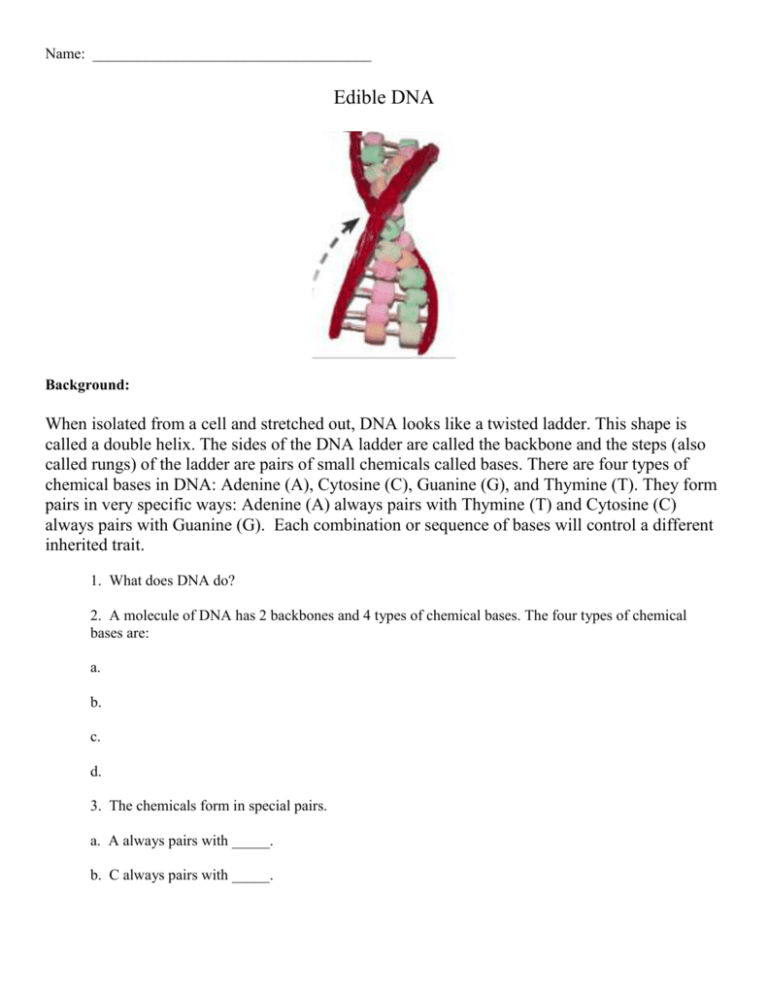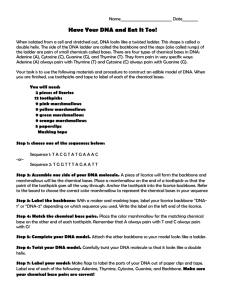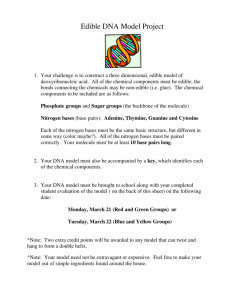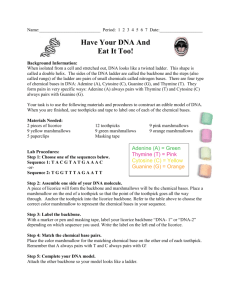Make a Model of DNA
advertisement

Name: _____________________________________ Edible DNA Background: When isolated from a cell and stretched out, DNA looks like a twisted ladder. This shape is called a double helix. The sides of the DNA ladder are called the backbone and the steps (also called rungs) of the ladder are pairs of small chemicals called bases. There are four types of chemical bases in DNA: Adenine (A), Cytosine (C), Guanine (G), and Thymine (T). They form pairs in very specific ways: Adenine (A) always pairs with Thymine (T) and Cytosine (C) always pairs with Guanine (G). Each combination or sequence of bases will control a different inherited trait. 1. What does DNA do? 2. A molecule of DNA has 2 backbones and 4 types of chemical bases. The four types of chemical bases are: a. b. c. d. 3. The chemicals form in special pairs. a. A always pairs with _____. b. C always pairs with _____. 4. Each segment of the backbone has a site for one of the chemical bases to attach to. The DNA molecule ends up looking like a twisted ladder. The whole structure is called a double __________________________. Materials: licorice sticks (2), colored marshmallows (9 of four different colors), toothpicks (12), paper plate, paperclips (5), and masking tape Procedure: 1. Create a key for your bases: Adenine (A) = ___________ Thymine (T) = ___________ Cytosine (C ) = ___________ Guanine (G) = ____________ 2. Assemble one side of your DNA molecule. A piece of licorice will form the backbone and marshmallows will form be the chemical bases. Place a marshmallow on the end of a toothpick so that the point of the toothpick goes all the way through. Anchor the toothpick into the licorice backbone. Anchor the bases according to the following sequence: TACGTATGAAAC 3. Match the chemical base pairs. Place the color marshmallow for each matching chemical base on the other end of each toothpick. Remember that A always pairs with T and C always pairs with G. 4. Complete the DNA molecule by adding the other backbone (licorice) so your model looks like a ladder. 5. Twist your DNA model. Carefully twist your DNA molecule so that it looks like a double helix. Observations Draw a diagram of your DNA double helix model. Label one of each of the following: Adenine, Thymine, Cytosine, Guanine, and Backbone.







